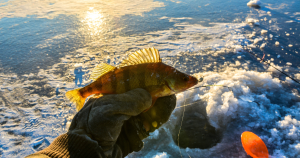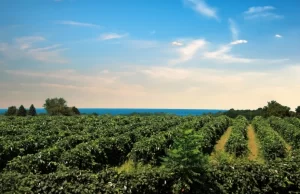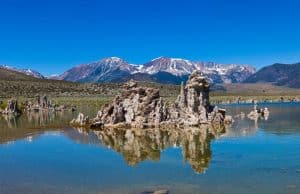This post contains affiliate links. If you click and purchase, we may earn a small referral fee at no extra cost to you. Read our full disclosure.
The Trent-Severn Waterway is one of Ontario’s historical treasures, coursing 240 miles across southern Ontario from Lake Ontario to Lake Huron’s Georgian Bay.
Originally planned and built to provide a shorter route to Lake Huron for transportation, logging and settlement, the waterway engendered much controversy while being built, causing construction to stretch over 90 years. Although construction began in 1833, the first boat to complete the entire trip was not until 1920.
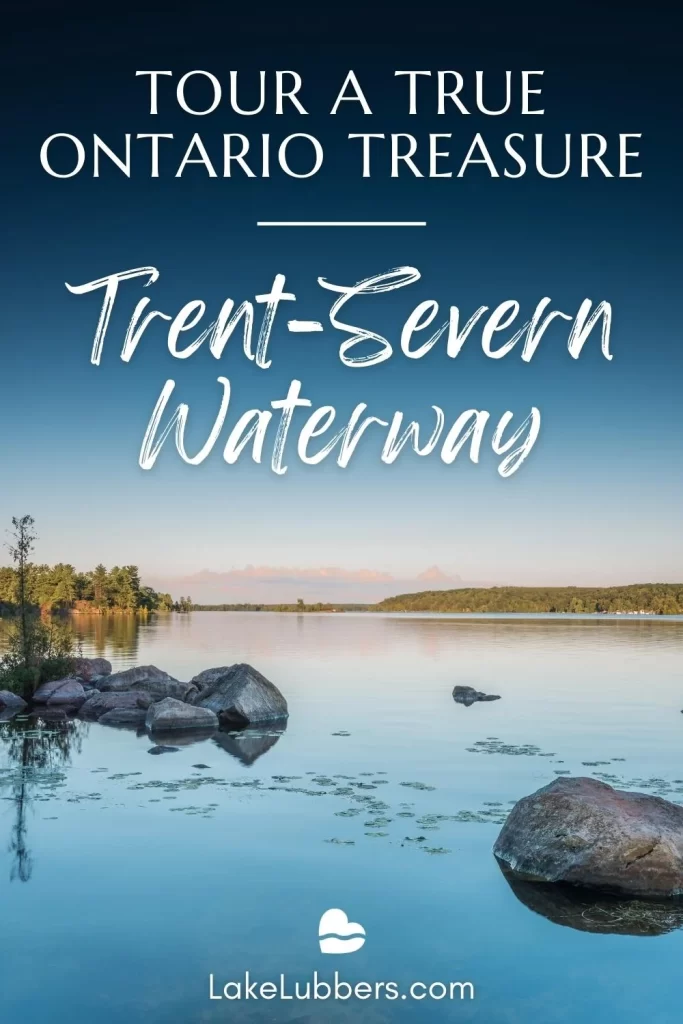
Originally based on canoe routes introduced to European trappers by First Nations tribes residing in the area, the system utilized a series of rivers and lakes, both inter-connected or reached via a short portage. The same route was used by early settlers to reach their new homes in the interior.
Lumbering interests used parts of the the waterway to transport logs to market, encouraging both private investors and government to fund the complete waterway.

The Trent-Severn system of locks
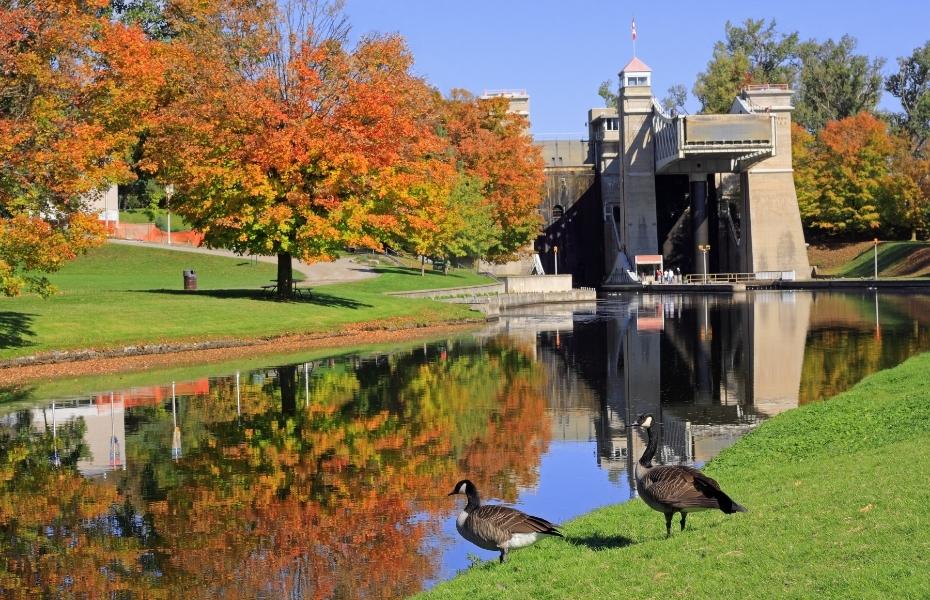
The first improvement to the popular route was in the Kawartha Lakes Region where a lock was built to facilitate logging. By the time the waterway was finally completed, it contained 44 locks, about 75 control dams, 15 swing bridges and two marine railways (at Big Chute).
Two of the locks, at Peterborough and Kirkfield, are hydraulic-lift locks, which are unique in North America and among the highest in the world. The locks overcome a rise of 597 feet from Trenton on Lake Ontario to the summit at Balsam Lake, and then a drop of 263 feet to Port Severn on Lake Huron.

Boating on the Trent-Severn Waterway
En route, the Trent-Severn Waterway passes through at least 20 sizeable lakes, a number of rivers and several canals.
Although never heavily utilized for industrial transportation, the Trent-Severn Waterway had become a favorite pleasure boating route for inland sailors by the time it was completed. The completed system has a minimum depth of five feet, nine inches, and the smaller locks can handle boats up to 23 feet in width and 84 feet in length.
Cruising the entire length of the system usually takes five to seven days. With an overhead clearance of 22 feet, the waterway can accommodate most yachts and houseboats.
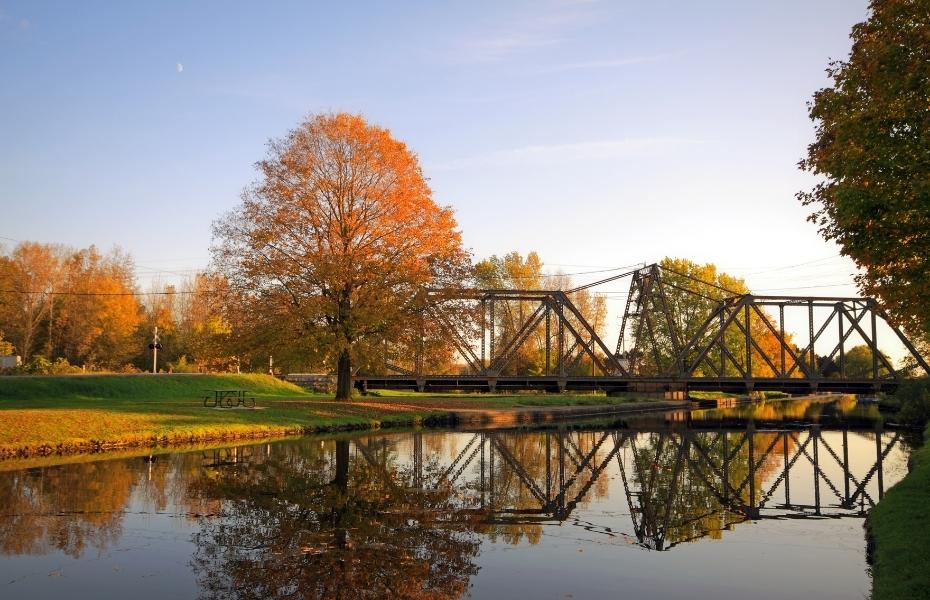
Open mid-May to mid-October, the waterway is one of the busiest in Canada. To use it, a number of regulations must be met, including a strict 6 mph speed limit within the navigation channel. Channels are clearly marked, and individual charts are available for each section. Passes are sold for the locks and may be purchased either individually or as a season pass.
Numerous marinas, water-accessible restaurants, mooring areas, campgrounds and attractions along the route encourage many carefree sailors to spend an entire summer cruising the waterway.
Many of the locks have been improved in the past few years, but some still remain original. The unusual marine railway at Big Chute near the western end of the route is a most interesting experience even for those with a long boating history. The waterway was eventually named a National Historic Site, and Parks Canada took over maintenance and control for the Canadian government in 1972.

What lakes are along the Trent-Severn Waterway?
Integral to enjoying the Trent-Severn Waterway is that its route takes boaters through a number of lakes large and small. Lake Simcoe on the western side of the system is one of the largest lakes in southern Ontario (184,000 acres).
Both Simcoe and adjacent Lake Couchiching (8,300 acres) are popular summer residence lakes and popular with vacationers. The Kawartha Lakes midsection of the route is home to the famed Kawartha Lakes.
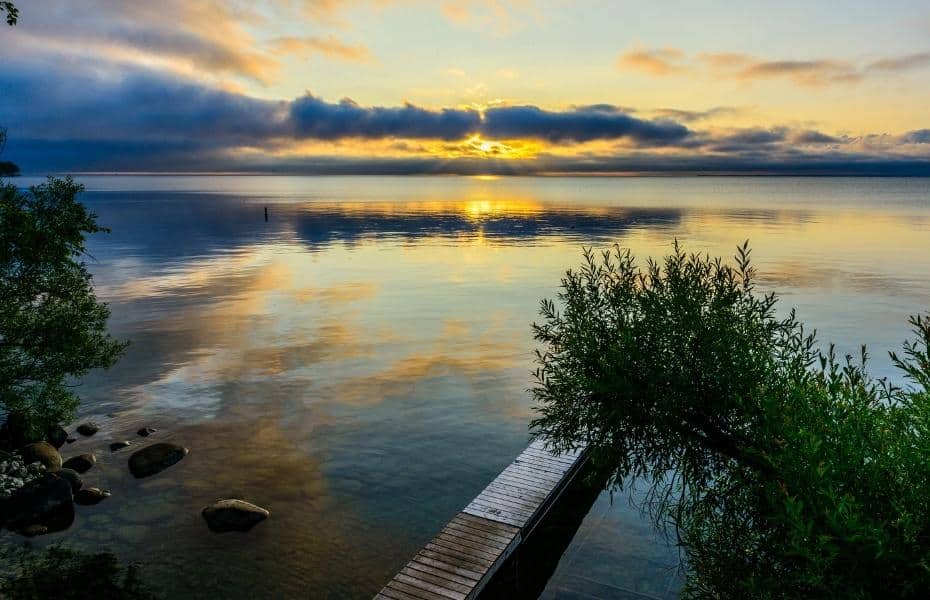
By the time the Trent-Severn Waterway was completed, the Kawartha Lakes had already become one of Canada’s best-known vacation destinations. Because of the early growth of resort hotels, fishing cabins and cottages on its many lakes, the Kawartha Lakes quickly gained the popular name of ‘Cottage Country.’
Although the area contains more than 50 lakes, only 14 of them are properly called the Kawartha Lakes: Balsam Lake, Bald Lake, Buckhorn Lake (7,900 acres), Cameron Lake, Chemong Lake, Clear Lake, Deer Lake, Katchewanooka Lake, Lovesick Lake, Pigeon Lake, Sandy Lake, Scugog Lake and Sturgeon Lake.
The waterway routes through most of them. The largest lake on the eastern leg of the water journey is Rice Lake (24,700 acres). All of these lakes are weekend and summer destinations as they are all within a couple of hours’ drive of many of Ontario’s most populous cities.
The lakes are well-known fishing and water sport destinations, and the waterway is a vital part of cottage life on the lakes. The lakes are used as a transportation shortcut to other areas of ‘Cottage Country,’ where going around by road would take far, far longer and add many miles.

Things to do at Trent-Savern Waterway
Even land-based visitors to the Trent-Severn Waterway and its resort areas can find plenty of ways to experience the famed route. Non-boaters can find a number of cruises offered along all or parts of the waterway, many quite luxurious.
Numerous marinas rent all types of boats, from canoes to powerboats to houseboats to explore this famed waterway for a day or a week or more.
Long known as a superb fishing destination, the lakes on the Trent-Severn Waterway provide habitat for trout, walleye, muskie, pickerel, largemouth and smallmouth bass, panfish, perch, bullhead, and black crappie. Knowledgeable locals and fishing forums can give valuable information as to which lake is best for each species and during what times of the year.
Even when the waterway is officially closed and the lakes frozen, ice fishing is popular at many lakes here. The frozen surfaces provide good terrain for cross-country skiing, snowshoeing, snowmobiling and ice skating.
Numerous trails and natural areas are excellent for wildlife viewing, and the many small villages along the lakes and waterway are geared toward providing for the needs and desires of a tourist population.
The entire Trent-Severn Waterway system many not have met the original intent of the builders, but it certainly has proven its worth to the visitors to southern Ontario. The waterway has contributed enormously to the growth of a thriving tourism industry, all set within a forested, watery landscape along its 240-mile route.

Adventure Awaits at New York’s Adirondack Lakes
The Adirondack Region of northern New York is a 6.1 million-acre national treasure, thanks to the state legislature that created Adirondack Park in 1894 to keep the land “forever wild.” The Park…

